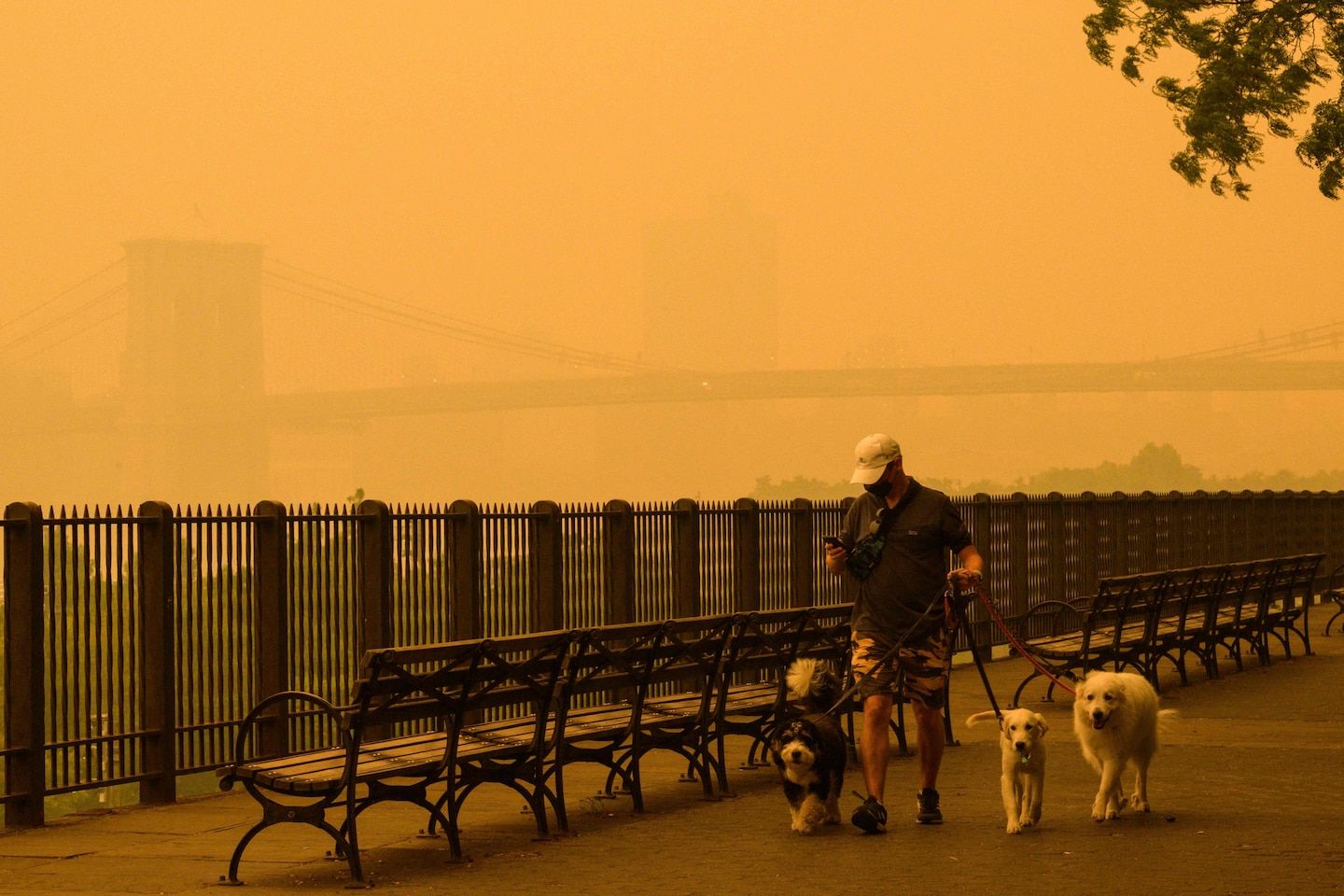How to keep pets safe from wildfire smoke hazards
Listen 4 min Comment on this story Comment Gift Article Share
As wildfire smoke from Canada drives air pollution to record-high levels, prompting air quality warnings and cancellations of outdoor events, humans aren’t the only creatures vulnerable to health hazards. Want easy home advice delivered right to your phone? Sign up for The Home You Own’s “Live Better with Little Effort” text message course for fun tips and tricks. ArrowRight Veterinarians and animal health experts say for pet owners, the simplest thing to remember during an air quality crisis is that if you have to go indoors, your animals probably do, too.
“Just like people, animals that are very young or elderly, or have existing respiratory issues, those are the most vulnerable,” said veterinarian Lisa Lippman, who directs virtual medicine for Bond Vet, a New York-based company that operates clinics across the Northeast.
“Anything that breathes, that has lungs and a heart,” is going to be prone to respiratory effects and smoke inhalation, Lippman said. Birds and flat-faced breeds of cats and dogs are particularly vulnerable, she noted, adding: “If you have a bird, shut the windows.”
Advertisement
Here are a few basic guidelines to keep animals safe from wildfire smoke:
Stay indoors
The best way to protect your pets is to limit their exposure to the smoky outdoors until air pollution return to safe levels, Lippman said. If pets have to go outside to relieve themselves, keep the breaks short and nix vigorous activity and prolonged walks, Lippman added.
For pets used to more outdoor exercise, she said now is the time to focus on “boredom busters.”
“Brain games inside are going to be really important — having mental stimulation is often just as important as physical stimulation,” Lippman said, suggesting food puzzles, games and training exercises.
Use filtration (but no pet masks)
If you haven’t been using an air filter since the peak pandemic times, dust it off and turn it on for your pet’s sake. Lippman suggested using HEPA filters for fine particles, but there’s no need to go so far as outfitting your pet with a mask.
Advertisement
In her own home, Lippman said she’s put her 12-year-old Rhodesian ridgeback in a room with a HEPA filter. And while humans might reach for a N95 mask, it’s not something Lippman said she typically recommends for animals.
“They do exist, but we don’t recommend them because they tend to panic animals, which makes them breathe harder,” she said.
Keep the animal’s space well-ventilated
Brian M. Aldridge, a clinical professor at the University of Illinois College of Veterinary Medicine who studies animal respiratory health, said ventilation is key for good air quality.
“The solution to pollution is dilution,” Aldridge said. “You want fans and air flow — it’s not just a matter of putting animals out of exposure by getting them indoors.”
The danger to animals comes from not only the duration of the exposure to polluted air but also the intensity of the pollution. If animals are in a semi-indoor area such as a pen or coop that can be ventilated, aim for an “air change” every 15 minutes.
Advertisement
“If they’re in a limited area, think about fans and air movement and introduction of clean air with toxic air four times an hour,” he said.
For large animals that typically live outdoors, such as livestock, it may not be practical to move them indoors, so look for optimal outdoor spaces where perhaps the wind direction is changing or a lower point of elevation.
“Even within a garden or a backyard, there are microenvironments,” Aldridge said.
Keep animals hydrated
Smoky air can also be intensely dry, and it’s one more instance in which humans can use their own comfort to gauge their animal’s needs, Aldridge said.
Smoky air can dry out mucus membranes, which puts the lining of the respiratory tract at greater risk.
“Make sure your animals are really well-hydrated so their mucous is working well,” Aldridge said.
Look for signs of distress
While it’s important to pay attention to the Air Quality Index and warnings from officials about pollution, a pet experiencing irritation from air contamination may show it. Signs include running noses, sneezing, gagging, coughing, weeping eyes and swollen eyes.
Lippman said to pay close attention to any behavioral changes, especially if eating or drinking decreases, and fatigue or weakness.
The American Veterinary Medical Association advises pet owners to contact their vet if they notice signs of distress in their pets.
GiftOutline Gift Article
Source: The Washington Post


